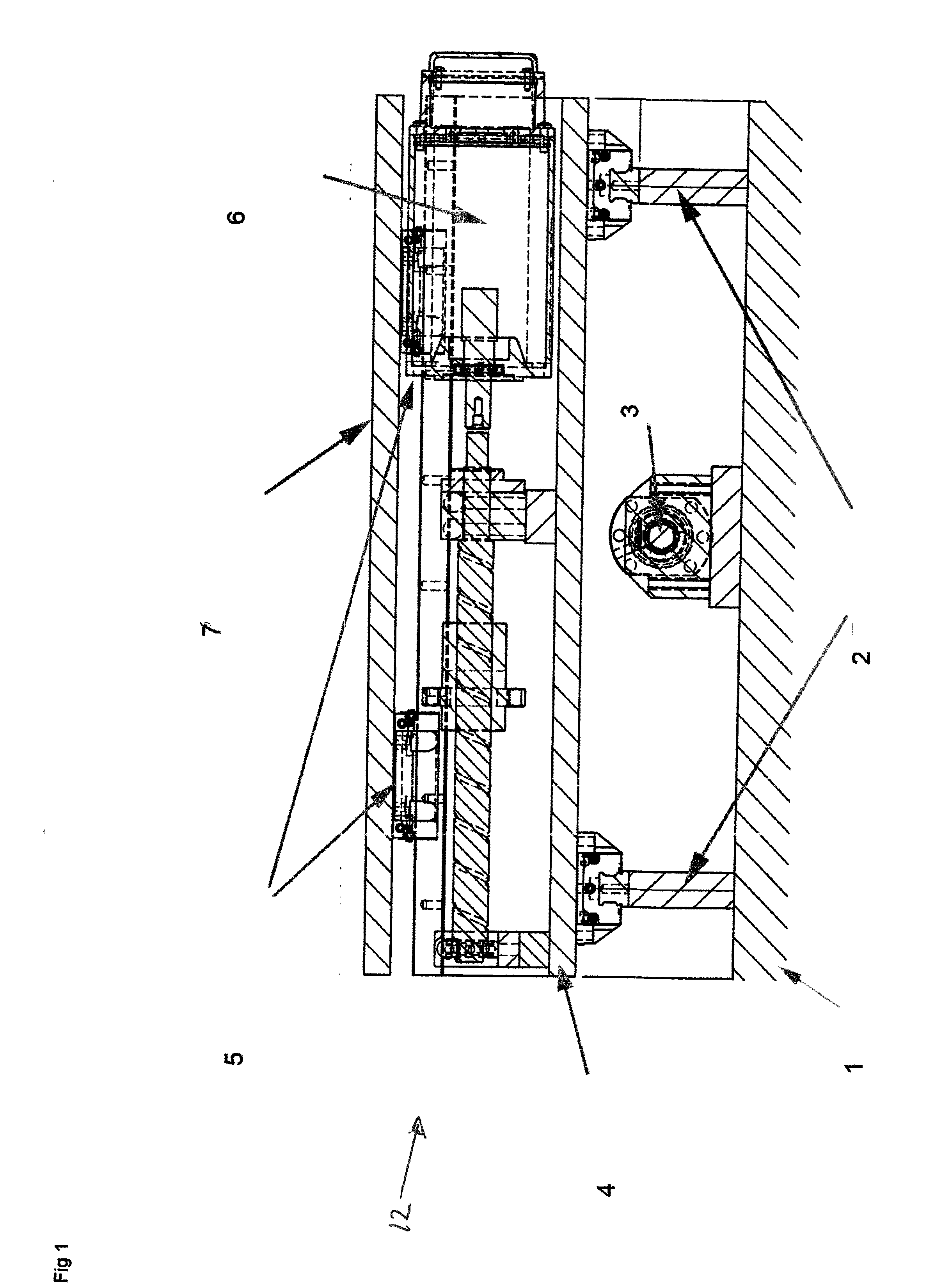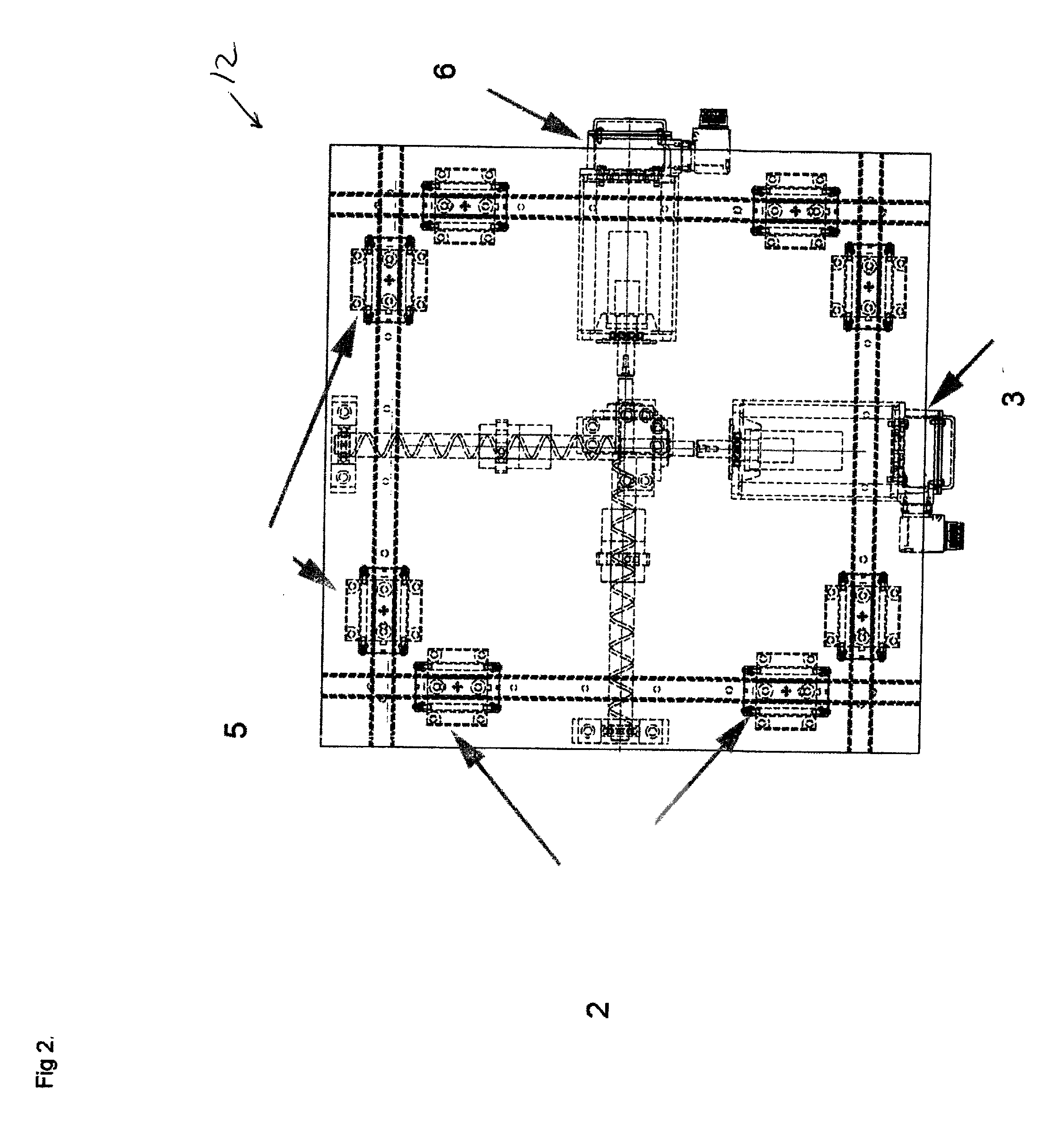Object, Such as a Building, Provided with a System for Preventing Damage from Earthquakes to the Object
a technology for preventing earthquake damage and objects, applied in the field of objects, can solve the problems of increasing the distance the most destructive type of seismic wave, and the inability to detect the high frequency of the first wave at a greater distance, so as to prevent people's injuries and structural damage, and eliminate earthquake damage
- Summary
- Abstract
- Description
- Claims
- Application Information
AI Technical Summary
Benefits of technology
Problems solved by technology
Method used
Image
Examples
Embodiment Construction
[0049]In a preferred embodiment, the system is comprised of an active foundation capable of two DoFs (Degrees of Freedom) and it can support also building superstructures.
[0050]In FIG. 1 a side view of the assembled active foundation 12 is drawn. The Ground anchored foundation 1 is a large embedded concrete structure that also includes two protruding rails / guides 2. On it are also mounted the motors and / or actuators 3 that are driving the single Dof moving plate 4 responsible for real time inversion of a single axis component of the lateral seismic ground motion. The single Dof moving plate 4 also has two protruding rails / guides, rotated 90 degrees compared to the rails / guides of the ground anchored foundation. Mounted on the single Dof moving plate 4 are also motors and / or actuators 6 that are driving the second Dof moving plate 5. The top plate 7 with payload 11 is moved in real time to inverse the second single axis component of the lateral seismic ground motion.
[0051]FIG. 2 show...
PUM
 Login to View More
Login to View More Abstract
Description
Claims
Application Information
 Login to View More
Login to View More - R&D
- Intellectual Property
- Life Sciences
- Materials
- Tech Scout
- Unparalleled Data Quality
- Higher Quality Content
- 60% Fewer Hallucinations
Browse by: Latest US Patents, China's latest patents, Technical Efficacy Thesaurus, Application Domain, Technology Topic, Popular Technical Reports.
© 2025 PatSnap. All rights reserved.Legal|Privacy policy|Modern Slavery Act Transparency Statement|Sitemap|About US| Contact US: help@patsnap.com



